Compressed air car arrives
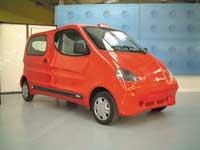
The car gives us great independence and autonomy, we consider it essential and therefore there are more and more cars in the streets. But that has its influence. In fact, the pollution generated in cities comes mainly from the exhaust pipes of cars.
CO 2 is one of the main causes of the current greenhouse effect. In the combustion reaction of gasoline, diesel and, in general, any fuel, CO 2 atmosphere, nitrogen oxides and other emissions are released. This is the reaction that occurs in conventional car engines: fuel combustion. And as the number of cars increases, the amount of pollutants increases.
As a result, the search for alternatives to the combustion engine has become a necessity that major car manufacturers seek. One of them is the compressed air car.
Guy Nègre and MDI
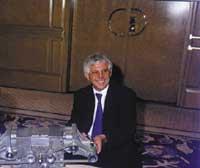
French engineer Guy Nègre has been looking for the ‘clean’ engine for years. His first success came when he developed the engine that uses gasoline and compressed air, both fuels. His echo after his appearance in the media gathered many investors in his environment, and then focused on the development of an engine that only works by compressed air. Since founding the Luxembourg-based MDI (Motor Dévelopment International) association in 1991, MDI engineers have worked on developing a clean engine to improve the characteristics of this work.
Car Features
‘ Zeropolution is the alias of the car and perhaps with this name describes the most important feature of the car. That is, when there is no combustion, there will be no emission of pollution to the atmosphere, and even more, a car can clean every day 90 m 3 of ambient air, since in the cylinder compressed air and external air are mixed, for which it is necessary to filter the outside air first.

From the regional point of view, the first resulting prototype can reach 300 km to the next supply. However, the autonomy of the most advanced electric car is half. That is why it is said that the MDI is a car for the city.
The car can be supplied at service stations. Once there, wait two to three minutes until the deposit is filled with compressed air, pay a euro and a half and move on. To do this, service stations must have a minimal infrastructure and, of course, quite widespread. However, the supply may be made differently: Connected to 220 V mains. The car will have a small compressor that will pick up and compress the street air. In this case you will have to wait three or four hours.
The oil change will also be very different. The lack of combustion also has its effect and the oil change will be about 50,000 km., in addition you can use the own cooking oil that will only need a liter of water each time.
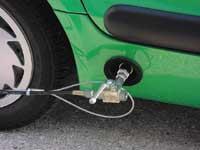
As mentioned above, from the environmental point of view, it is important that the clean air that will leave the exhaust is below 0º C. This has two advantages: on the one hand, that these cars will stop heating the air of the cities, and on the other, that the cooling system of the car will be immediate if you use this exhaust air. Keep in mind that when we start the air conditioning system in summer the car consumes much more, not so in the case of the compressed air car.
Finally, if you look in your pocket, you will not save little. With one euro you can travel 166 km. However, with conventional cars running on gasoline it is spent ten times more.
The MDI engine can increase the use of renewable energy
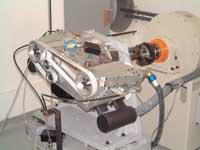
The MDI engine is not just a vehicle propulsion instrument. Renewable energies can be a way to make them more profitable, especially as a new clean system of energy transformation.
In fact, even though solar energy, wind energy and hydraulics are clean and at the moment, they are not used when consumption decreases. The clearest example occurs at night. The wind blows both day and night, and the same happens with the waterfalls of the rivers, but at night consumption is greatly reduced and accumulates or loses the energy that is not used at the time of its formation.
To date, energy storage batteries have not been a good choice for two main reasons. On the one hand, because of its large volume and weight, and on the other, because the materials used in the manufacture of the batteries are pollutants (among others, they contain sulfuric acid).
However, these clean energies can be used to compress the air, that is, they can compress the air that the MDI engine will use. And what is its importance? There can always be wind turbines, large and small hydroelectric plants, etc. and compress the air. The MDI engine will use this air both to generate electric power and to generate another type of movement, among others, to move cars. The MDI motor will also be applicable in cogeneration and nautical.
A modern car

Guy Nègre has taken care not only of the engine, but also of the ‘skin’ of the car. The compressed air car is totally innovative. Light and simple appearance. The body is made of fiberglass and the tubular chassis (as in some racing vehicles), resulting in great rigidity with the least weight; the parts are glued instead of welds, as in aerospace technology, which facilitates assembly.
Instead of the usual car speedometer and the turn counter, the computer has a small screen in which the values of several variables appear at all times. And, of course, you can also adapt the telephony system (GSM) and the satellite positioning system (GPS).
The electric car system is also totally innovative. Guy Nègre bought a patent linking all the car cables in a single cable. That is, there will be a single cable for everything. The entire electrical system seems to be controlled by a small radio transmitter. All this will save 20 kilos of cables.
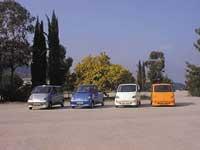
According to those who have been able to test the prototype of the car, the interior part of it is wide and functional. When you turn the key and start the car, it sounds little. Its power is relatively low (25 hp, the usual is 70-100 hp), but the time is enough. This is because the engine is quite elastic, which causes a great boost from very few revolutions per minute and can rise to 4,000 rpm. Maximum power occurs at 3,500 rpm.
Marketing
The MDI continues to be approved in the south of France, very close to Nice. Once this is done, the beginning of marketing has been announced for the first months of 2003. In the Iberian peninsula eight zones have been distinguished, of which La Rioja, Navarra and the Basque Country are part. In each area an MDI factory and a totally innovative manufacturing model will be installed. For the moment, in the case of Spain, Barcelona is the most advanced city.
Whoever is thinking of buying a new car just has to wait a few months to be able to buy a compressed air car.
Car data sheetAlthough there are four models (taxi, van, pick-up and family), in general the characteristics are similar in all of them. |
MOTOR
|
TRANSMISSION Drive wheels: Rear |
DEPOSITS Tanks: Thermoplastic container and carbon |
Chassis and body Body: Fiberglass Doors: 2 |
Dimensions and weight Wheelbase: 2,915 m Length: |
CHARACTERISTICS Maximum speed: 110 km/h |
Resolving doubts
What will be the maximum | Autonomy depends on speed. |
Average consumption? | To travel 100 km you must spend less than one euro. |
How long | Three or four minutes in the dispensers; three and a half hours in the |
What mass | Driver and four companions, 450 kg if it is goods. |
Will the car be noisy? | As there are no explosions or |
Are deposits safe? | Yes. The same technology has been used as for the gas tanks of urban buses. |
When will the first cars come out? | The launch of the first cars is scheduled for early 2003. |
What will be the approximate price? | They will cost between 9,000 and 12,000 euros, depending on the model. |
What will be the guarantee? | If the car has defects in invention or manufacturing, the MDI warranty will be met. |
Will there | In the areas where the factories are built there will be workshops mainly related to the MDI. There you can repair the cars. |
Could the | No. Due to the volume of the cylinders (2,1 m in length and base of 25 cm in diameter), conventional cars have no space for this. |





